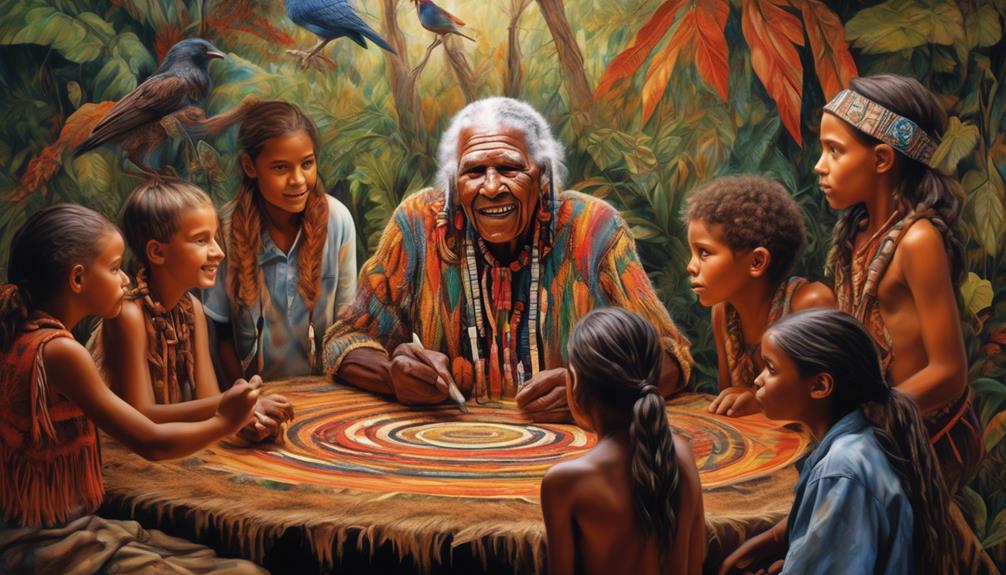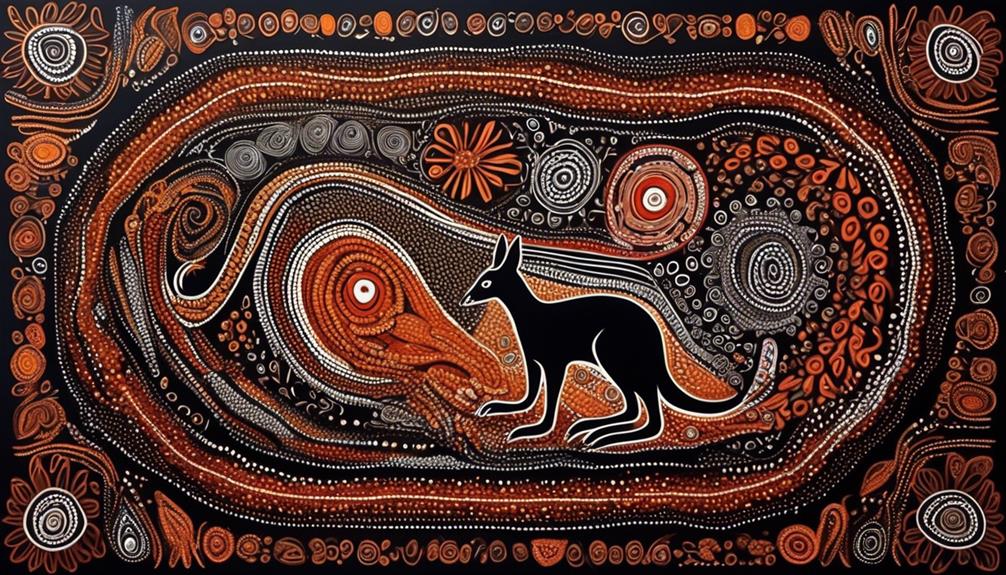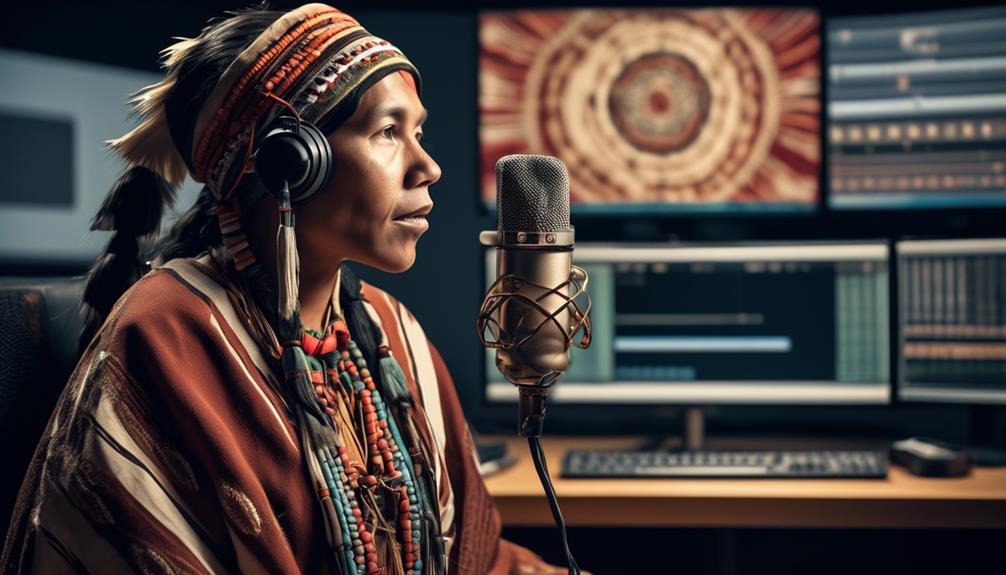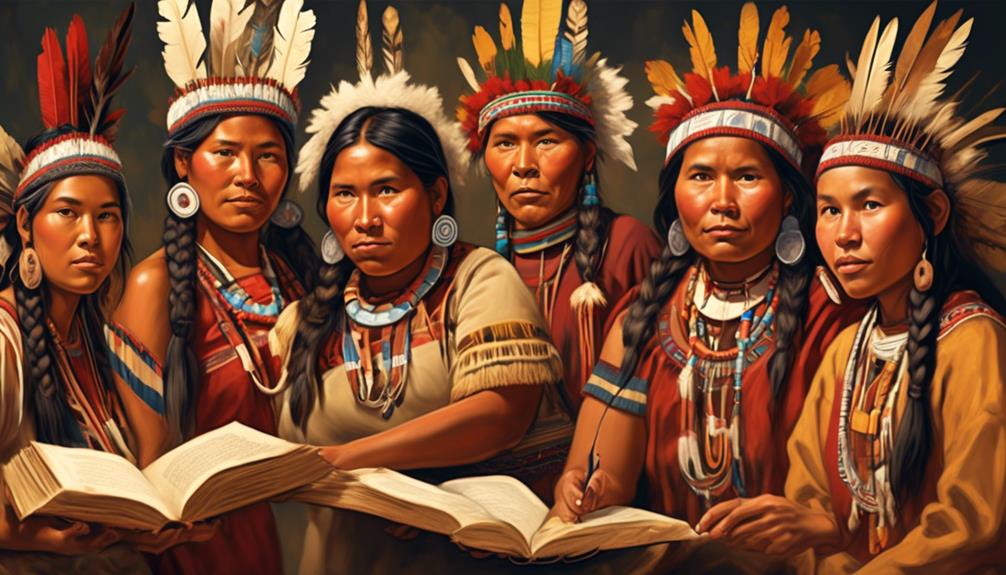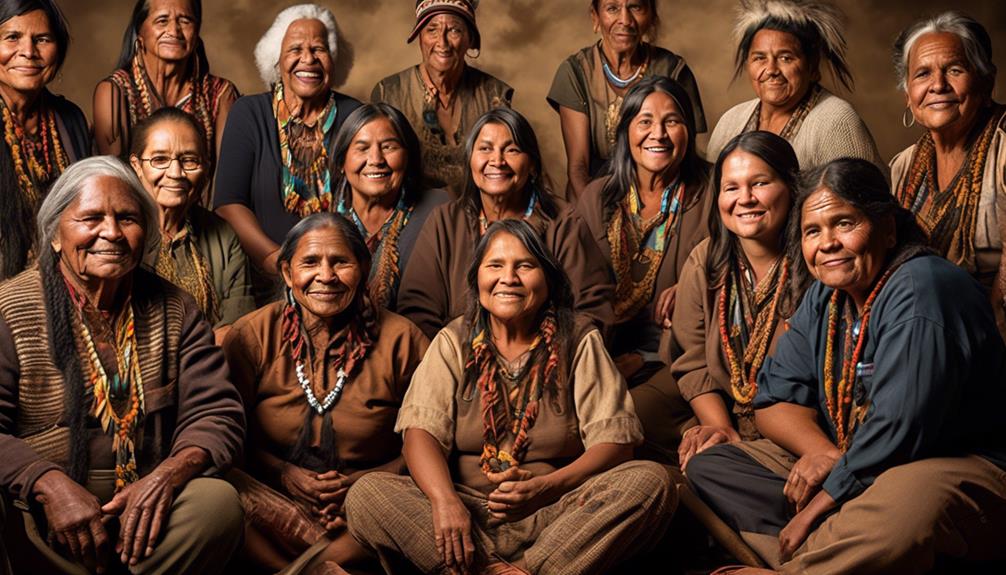Preserving the languages of Indigenous Australians is like safeguarding a piece of our national identity, a crucial means of understanding the diverse tapestry of Australia’s cultural heritage. It is imperative to protect these languages despite the challenges they may encounter.
However, the importance of this endeavor cannot be overstated, as the loss of these languages equates to the loss of invaluable knowledge and a profound connection to the land.
As we explore the complexities of language preservation and revitalization, we will uncover the significance of Indigenous languages and the impact of their preservation on the broader Australian community, opening up a world of insight and understanding that is essential for our collective future.
Key Takeaways
- Preserving Indigenous languages maintains cultural knowledge and identity within Aboriginal communities.
- Indigenous languages hold the key to a wealth of Indigenous knowledge, traditions, and practices.
- Historical policies like forced assimilation have led to the extinction or endangerment of many Australian languages.
- Language revitalization programs require collaborative endeavors involving Indigenous communities, linguists, and educational institutions.
Importance of Indigenous Language Preservation
Preserving Indigenous languages is vital for maintaining cultural knowledge and identity within Aboriginal communities. Indigenous languages hold the key to a wealth of Indigenous knowledge, traditions, and practices that have been passed down through generations.
For Torres Strait Islander peoples and Aboriginal communities, language isn't simply a means of communication; it's a vessel for preserving unique teachings and meanings that are integral to their cultural identity. When Indigenous languages face the risk of disappearance, so too does the Indigenous knowledge embedded within them. This loss perpetuates the marginalization and discrimination faced by Aboriginal peoples.
Government policies play a crucial role in supporting the preservation of Indigenous languages, but community-led initiatives and collaborations are also essential. Reviving and preserving Aboriginal languages isn't just about linguistic diversity; it's about healing and empowering Indigenous communities.
Efforts in language preservation involve embracing technology and innovative approaches to ensure that these languages continue to thrive and pass on invaluable cultural heritage to future generations.
Challenges in Language Revival
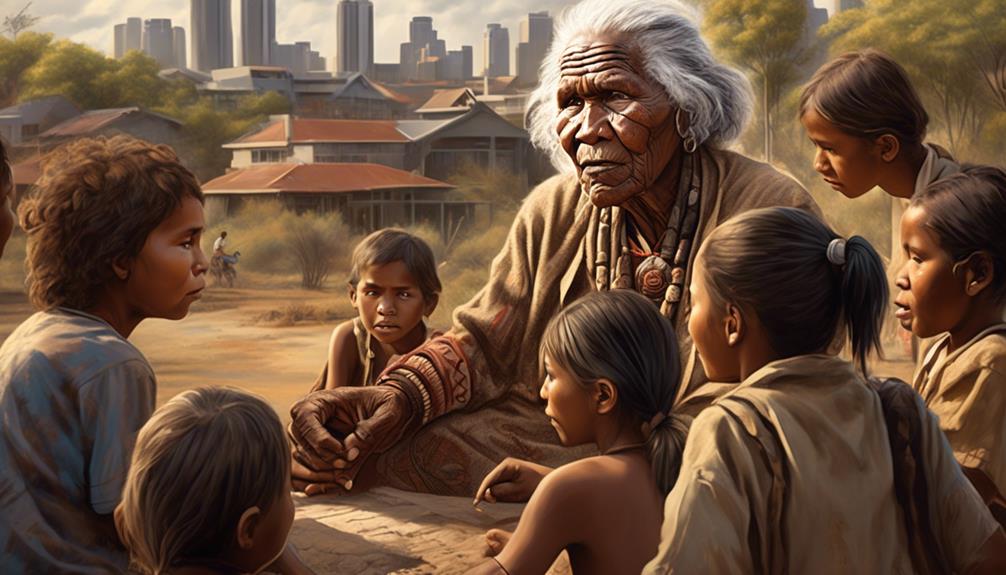
Challenges in reviving Indigenous languages often stem from historical policies, limited resources, and the lack of fluent speakers, hindering preservation efforts and intergenerational transmission.
Many Australian languages, particularly those of Indigenous communities, are endangered or have already become extinct due to historical policies like forced assimilation. The Australian Institute of Aboriginal and Torres Strait Islander Studies highlights the challenges in language revival, citing limited resources and funding as significant hurdles to language revitalization programs.
Moreover, the scarcity of fluent speakers and the lack of intergenerational transmission further impede efforts to revive and preserve Indigenous languages.
Collaborative endeavors involving Indigenous communities, linguists, and educational institutions are crucial for the successful revival of Australian languages. Overcoming these challenges requires a concerted effort to address historical injustices, allocate sufficient resources, and support initiatives that facilitate intergenerational language transmission.
Initiatives for Language Preservation
With the challenges in reviving Indigenous languages acknowledged, it's imperative to highlight the various initiatives that are actively contributing to language preservation and revitalization efforts in Australia. These initiatives are crucial for the preservation of Australia's Indigenous languages and the cultural heritage they embody.
Here are some of the key initiatives supporting the preservation of Aboriginal and Torres Strait Islander languages:
- NAIDOC Week Celebrations: NAIDOC Week plays a significant role in celebrating the resilience and richness of Indigenous languages, emphasizing their cultural importance and the need for their preservation.
- University Involvement: Universities such as La Trobe are integrating Indigenous culture and language into their structures, promoting cultural awareness and community engagement through education.
- Education Institutes' Support: Educational institutions are actively incorporating Indigenous languages and culture into their curricula, thereby supporting the preservation and revitalization of these languages.
- Community-Led Documentation: Various initiatives focus on documenting and recording endangered languages, with support from community-led efforts and collaborations between linguists, educators, and Indigenous communities. These initiatives utilize technology and government recognition for sustaining language revitalization efforts.
These initiatives are pivotal in ensuring that the diverse linguistic heritage of Australia's Indigenous language groups continues to thrive and endure for generations to come.
Impact on Indigenous Communities

Efforts and initiatives for Aboriginal language preservation and revival are making a profound impact on Indigenous communities. These efforts address the erosion of cultural traditions, knowledge, and practices, and contribute to the social and emotional well-being of Aboriginal peoples.
The loss of Aboriginal languages has had a detrimental effect on Indigenous communities, perpetuating marginalization and discrimination. However, through language preservation programs and collaborations with linguists, educators, and government support, positive changes are occurring.
These efforts are crucial in fostering a sense of cultural pride and identity among Aboriginal and Torres Strait Islander peoples. By revitalizing languages, we aren't only preserving primary sources of knowledge and history but also creating opportunities for intergenerational transmission, which is vital for the survival of these languages.
Bilingual education for Aboriginal language speakers has been instrumental in maintaining and revitalizing languages. This approach also strengthens academic achievement, cognitive development, and cultural pride.
Through these initiatives, we're witnessing a transformation in Indigenous communities. These efforts foster resilience, empowerment, and a renewed sense of cultural identity.
Resources for Language Revitalization
Indigenous communities have access to a variety of resources for the revitalization of their languages, including community-led programs and technological tools. These resources are essential in preserving and transmitting cultural knowledge and identity.
Efforts and initiatives play a crucial role in preserving and reviving Indigenous languages, which are spoken among Aboriginal and Torres Strait Islander communities in Australia.
Bilingual education supports the maintenance and revitalization of these languages, enhancing academic achievement and cognitive development among Indigenous students.
It's crucial to understand that language loss leads to the erosion of cultural traditions, knowledge, and practices, affecting the social and emotional well-being of Indigenous individuals and communities.
Collaborations between Indigenous communities, linguists, educators, and government support are vital for sustaining language revitalization efforts, particularly in regions such as the Northern Territory.
Frequently Asked Questions
What Has the Australian Government Done to Preserve Aboriginal Languages?
We've supported language revitalization through funding, community involvement, and educational programs.
Our government initiatives prioritize preserving Indigenous languages, aligning with broader efforts to address historical discrimination and promote Indigenous rights.
Bilingual education programs have been crucial, fostering cultural preservation and academic achievement among Indigenous students.
Our commitment to preserving Aboriginal languages reflects our dedication to serving and supporting Indigenous communities in Australia.
What Can Be Done to Preserve Indigenous Language?
We believe that preserving indigenous languages is essential for cultural preservation and linguistic diversity. Community involvement and education programs are vital. Technology integration, such as language apps, supports language revitalization. Collaborations between linguists, educators, and indigenous communities are crucial. Also, government support is essential for sustaining these efforts.
Did you know that only about 120 indigenous Australian languages are still spoken today? This highlights the urgency of preserving and revitalizing these languages.
Why It Has Been Difficult to Retain Aboriginal Languages in Australia?
Retaining Aboriginal languages in Australia has been difficult due to cultural assimilation, colonization's impact, limited educational support, diminishing linguistic diversity, and challenges in preserving the oral tradition.
Our community involvement and awareness are crucial in addressing these issues. Efforts to revive and preserve Indigenous languages are underway, aiming to counteract historical discrimination and promote intergenerational transmission.
We believe that supporting these initiatives is essential to honor and protect Indigenous languages and cultures.
How Many Indigenous Australian Languages Are Endangered?
Endangered languages face a critical threat, impacting linguistic diversity and cultural preservation. Language revitalization efforts, community engagement, and educational initiatives are essential for safeguarding these languages.
Preserving Indigenous Australian Languages is crucial for honoring traditions and knowledge. As we work together, we can support the revival of endangered languages, enhancing the well-being of Indigenous communities and fostering a deeper understanding of their rich cultural heritage.
Conclusion
In conclusion, preserving Indigenous Australian languages is vital for the cultural and spiritual wellbeing of Indigenous communities.
For example, the Yawuru people in Broome, Western Australia, have implemented language revitalization programs to teach their traditional language in schools and within the community.
This has strengthened their cultural identity and connection to their ancestors, fostering a sense of pride and belonging among the younger generations.
Such initiatives are crucial for preserving Indigenous languages and heritage for the future.
